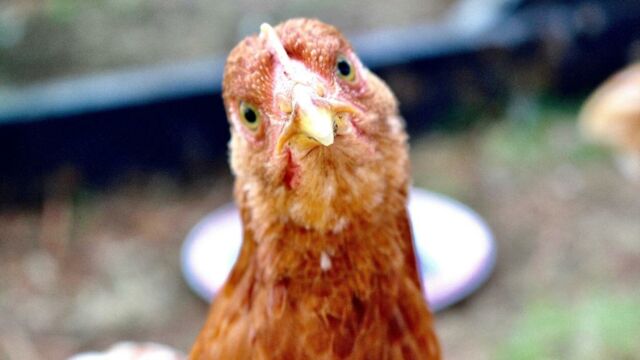Bird flu: A new strain has been detected for the first time in humans in China

Chinese health authorities have announced the first transmission of H3N8 bird flu to humans, detected on a farm in central China. Should we be concerned?
The Chinese Ministry of Health announced on Tuesday 26 April that a first case of avian influenza of the H3N8 strain, never before detected in humans, has been detected in a four-year-old child living in the central province of Henan.
Discover our latest podcast
However, local authorities are reassuring that the risk of human-to-human transmission is low. But a little more than two years after the start of the Covid-19 pandemic, should we be worried about this new virus crossing the species barrier?
More under this adMore under this adA 'one-off interspecies transmission'?
According to information from the Ministry, the four-year-old boy was infected directly by birds, after coming into contact with chickens on his parents' farm. But it is also possible that the contamination was due to the high presence of wild ducks in the area. The child was hospitalised in early April with a fever and other symptoms.
The Chinese health authorities say that tests carried out on the patient's relatives revealed 'no abnormalities' and that the case of the infected child is a 'one-off inter-species transmission.' The Ministry said:
More under this adMore under this adThe risk of large-scale transmission is low.
However, it still advises people not to go near dead or sick birds and to consult a doctor in case of fever or respiratory symptoms.
More under this adMore under this ad
What symptoms should alert you?
Like Covid-19, avian influenza is a zoonotic disease, which is transmitted from animals to humans and from humans to animals. This H3N8 strain is already known to infect several species, including horses, dogs, and seals.
More under this adMore under this adAs with other strains of avian flu, symptoms can range from fever, cough, sore throat, and muscle aches to 'severe respiratory illness.' The most severe cases can cause respiratory and multi-organ failure leading to death. In some patients, conjunctivitis, nausea, vomiting, and diarrhoea have also been reported.
Human-to-human transmission extremely rare
But human-to-human transmission of avian influenza remains extremely rare. According to the US Centers for Disease Control and Prevention (CDC), the H5N1 and H7N9 strains, detected between 1997 and 2013 respectively, have been the main causes of human cases of avian influenza.
More under this adMore under this adRegarding the H3N8 strain, a 2012 study found that it had caused fatal pneumonia in more than 160 seals along the US coast in 2011.
But humans still appear to be safe, according to China's National Health Commission, which said an initial study showed that the variant does not yet have the capacity to effectively infect humans and that the risk of a large-scale epidemic was low. Caution is still warranted, however, as the virus has a high mutation potential that could allow it to spread more easily in the future.
More under this adMore under this adThis article was translated from Gentside FR.
Read more:
⋙ COVID: This is the record for the longest coronavirus infection ever
⋙ COVID: Watch out for this serious side effect if you've been infected in the last six months
⋙ Covid: New Omicron variant XE found in the UK, here’s what experts are saying